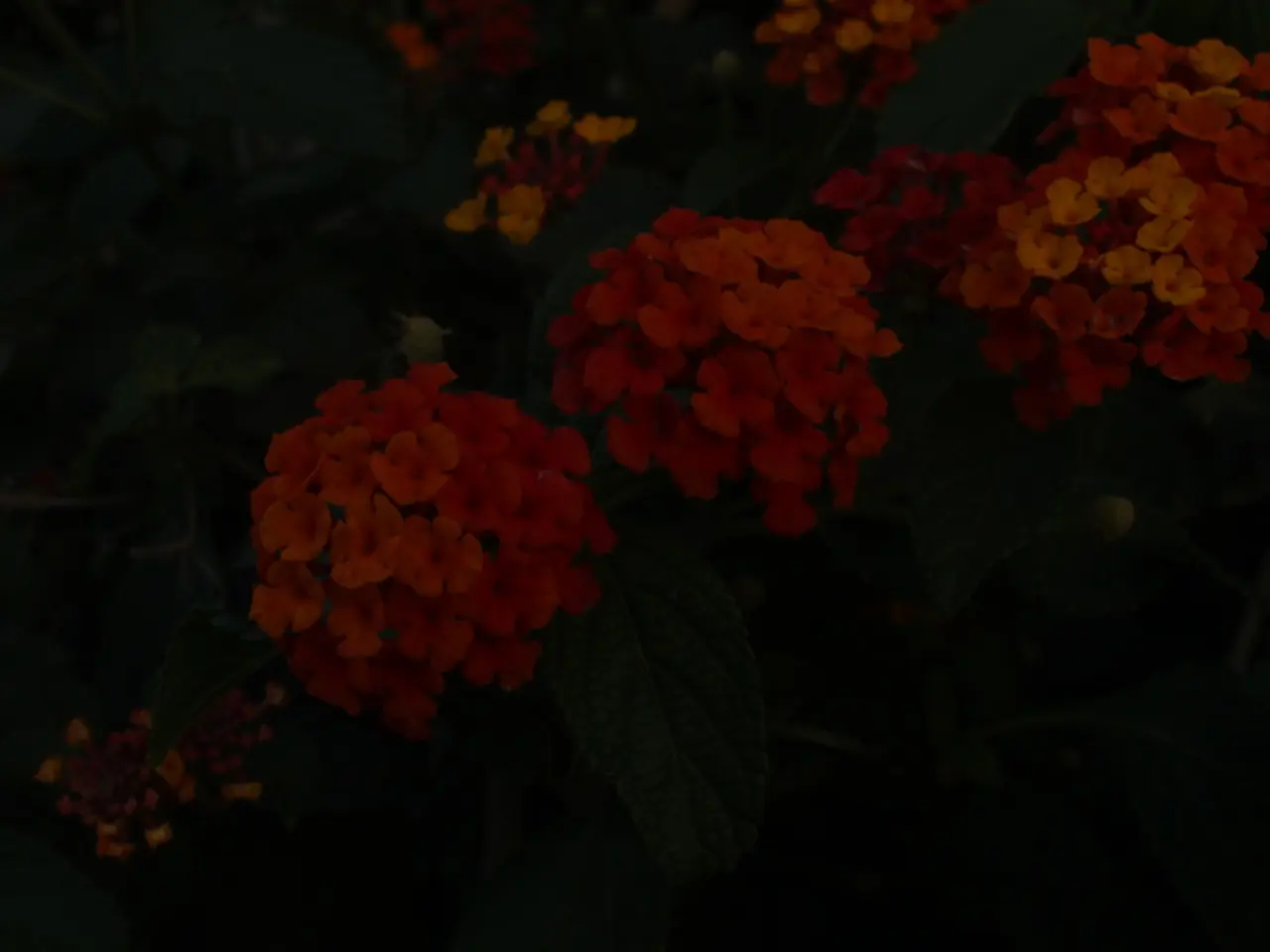Planting Flowers in Oklahoma: Optimal Timings and Suggestions
================================================================
In Oklahoma, where the climate can present challenges for gardeners, a thriving flower garden is achievable with the right knowledge and practices. Here's a guide to help you create a resilient and flourishing flower garden tailored to Oklahoma's environment.
Choosing the Right Plants
Seedling plants from a nursery can offer a head start in Oklahoma's climate. For a thriving flower garden, consider native plants and pollinator-friendly species adapted to the local climate, such as butterfly host plants like parsley and fennel. Ornamental flowering shrubs like hydrangeas and dogwoods also do well in Oklahoma’s climate when planted with proper soil and light conditions.
Gardening Practices for Success
Soil preparation is crucial. Oklahoma soils can be clay-heavy and compacted. Loosen the soil well before planting, and incorporate plenty of organic matter like compost and peat moss to improve fertility, drainage, and moisture retention. Aim for a neutral to slightly acidic pH (around 6.0 to 7.0) to support a broad variety of flowers.
Watering is critical due to Oklahoma’s hot summers. Deep soaking every other day during heat waves is beneficial for moisture-loving plants like hydrangeas. Using watering tools such as water rings can help target water efficiently around roots. Mulching (about 2 inches of organic mulch) around plants helps retain soil moisture and suppress weeds.
Effective pest control starts with maintaining plant health through proper watering, fertilizing, and pruning. Practices like Integrated Pest Management (IPM) encourage natural pest predators and reduce insect damage without heavy chemical use. Planting a diversity of native species also attracts beneficial insects and pollinators that keep pests in check.
Additional Tips
- Deadhead spent flowers, especially on hydrangeas, to promote further blooms and maintain garden tidiness.
- Choose heirloom seeds when possible, as they preserve local adaptations and nectar quality for pollinators.
- Companion planting benefits soil health and deters pests by supporting natural plant relationships in the garden.
Other Considerations
- In Oklahoma, it's crucial to ensure the right soil conditions, timing, and selection of suitable plants for a blooming, vibrant garden. The ideal soil for flowers in Oklahoma should be deep, well-drained, and rich in organic matter.
- Shade cloths and frost blankets protect plants from extreme temperatures, while windbreaks help minimize damage from strong winds.
- Local nurseries carry plants suited to Oklahoma's conditions, and irrigation methods like drip irrigation are effective in Oklahoma's dry climate.
- The ideal time to plant most flowers in Oklahoma is after the last frost date, usually around mid-April. Most flowers require at least 6 hours of direct sun.
- Regular hand-pulling or hoeing helps control weeds, and organic insecticides and beneficial insects like ladybugs can manage pests.
By focusing on native and pollinator-friendly plants, improving soil with organic amendments, watering deeply and regularly during hot periods, and using cultural pest controls, you can create a resilient and flourishing flower garden tailored to Oklahoma’s environment. Popular flower options for Oklahoma include marigolds, tulips, and daffodils. Glen, a gardening expert with over 15 years of experience, offers insights on gardening through his latest posts about garden fungicides, candy cane peppers, and watermelons. The OSU Extension's garden planning guide can also help with planting dates and variety selections tailored for Oklahoma.
Incorporating indigenous plants and pollinator-friendly species into a home-and-garden, such as marigolds, tulips, and daffodils, can contribute to a thriving Oklahoma flower garden, while taking advantage of nursery seedlings for a head start in the local climate. For an efficient watering system, utilization of watering tools like water rings and adopting practices like deep soaking and mulching can be beneficial, especially during hot summers.




